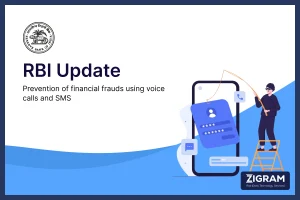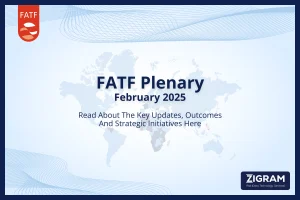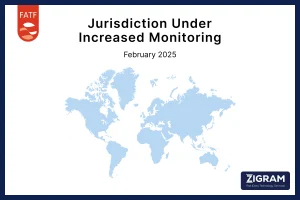Anti-Money Laundering (AML) regulations are designed to prevent and detect activities associated with financial crime, such as money laundering and terrorist financing. Financial institutions are required to implement AML screening processes to identify and monitor suspicious activities. However, a significant challenge in AML screening is the occurrence of false positives. A false positive in AML screening refers to a legitimate transaction or individual incorrectly flagged as suspicious. This article explores the causes, impacts, and strategies to mitigate false positives in AML screening.

Businesses are mandated by regulatory guidelines to produce a Suspicious Activity Report (SAR) for any transactions that appear suspicious. However, this process can become problematic when innocent transactions are mistakenly flagged as false positives, triggering unnecessary alarms. This not only delays the reporting of actual criminal activities but also results in businesses wasting valuable time. Additionally, false positives can lead to innocent customers being treated as guilty, negatively impacting customer experience. Consequently, many businesses lose valuable customers due to these errors. To minimize the risk of false positives, it is crucial for businesses to carefully review and analyze transactions before flagging them as suspicious.
Stay updated about the latest news in Fin-crime, follow us on LinkedIn
What Are The Causes Of False Positives?
Broad Screening Criteria
AML systems are often configured to be highly sensitive to a wide range of risk indicators to ensure no potential threat goes unnoticed. This heightened sensitivity, while well-intentioned, can lead to a large number of legitimate transactions being flagged as suspicious. The broad criteria used to capture all possible risks inadvertently increase the likelihood of false positives.
Inadequate Data Quality
Poor data quality, including outdated or incorrect information, can lead to false positives. Inconsistent data formats, missing information, and typographical errors all contribute to incorrect alerts. For instance, if a customer has legally changed their name but the system still uses their old name, it might trigger a false match.
Lack Of Tailored Rules And Scenarios
The algorithms used in AML screening tools may not be sophisticated enough to accurately differentiate between legitimate and suspicious activities. Simple rule-based systems, in particular, may produce a high number of false positives. Financial institutions often use generic rules and scenarios that do not account for the specific risk profile of their customers or the unique patterns of legitimate transactions within their business. Without customization, these rules can trigger alerts for normal customer behavior.
Similar Names
Many false positives arise from individuals having names similar to those on watchlists, AML, and PEP lists. Common names or slight variations in spelling can trigger alerts, even when there is no actual match. This issue is exacerbated when such entities share names with legitimate customers, leading to false hits based solely on name similarity. Coincidental matches are particularly frequent for common names or names from regions with unfamiliar naming conventions.
Complex Transaction Patterns
Legitimate transactions that involve multiple steps or entities may resemble money laundering schemes. This complexity can confuse screening systems, leading to false positives. The absence of contextual understanding regarding the nature of the business and its typical transaction flows further exacerbates this issue, as screening systems might not distinguish between routine business practices and illicit activities.
Inadequate Contextual Information
Basic sanctions screening might not consider secondary identifiers and context that could distinguish legitimate customers from sanctioned entities. Details like associated companies, employment history, business networks, and geolocation provide valuable context to clear false matches but are often overlooked in screening processes.
Screening Examples For False Positives
- A legitimate business transaction is flagged as suspicious because of unusual patterns, but is later determined to be a one-time occurrence.
- Transactions involving customers with common names are mistakenly flagged as matches on government watchlists, resulting in false hits.
- International wire transfers trigger alerts due to high-value amounts, even though they are legitimate business transactions.
The Impact Of False Positives
Operational Costs
Investigating false positives requires significant resources. Financial institutions must dedicate time and personnel to review and resolve each alert, increasing operational costs.
Customer Friction
Legitimate customers flagged as suspicious may face delays or disruptions in their transactions. This can lead to customer dissatisfaction and damage to the institution's reputation.
Regulatory Consequences
High rates of false positives can attract regulatory scrutiny. Regulators may question the effectiveness of an institution’s AML program, potentially leading to fines or other penalties.
Resource Allocation
Excessive false positives can divert resources away from investigating genuine suspicious activities. This misallocation can reduce the overall effectiveness of the AML program.
10 Ways To Reduce False Positives
1. Enhanced Data Quality
Improve data accuracy and consistency through data cleansing and enrichment. Structure data clearly (e.g., organizing names into title, first name, surname) to reduce administrative ambiguity and improve false positive rates.
2. Data Relevance
Ensure collected data is relevant and timely for the customer's risk profile. Update information such as name changes or changes in residence to accurately reflect the customer's current situation and reduce false positives.
3. Effective List Management
Use data and technology to manage sanctions, PEP, and watchlists efficiently. Implement holistic solutions to save time and focus on actual risks, reducing the burden on compliance teams.
4. Advanced Analytics And Machine Learning
Utilize advanced analytics and machine learning to improve AML screening accuracy. These technologies can better identify patterns and distinguish between legitimate and suspicious activities.
5. Regular Screening Criteria Updates
Continuously update and refine screening criteria based on the latest financial crime trends and feedback from previous investigations.
6. Customer Risk Profiling
Implement customer risk profiling to tailor screening processes to individual risk levels. Monitor high-risk customers more closely, while reducing unnecessary alerts for low-risk customers.
7. Sophisticated Name Matching
Use advanced name matching algorithms that consider spelling variations, phonetics, and cultural differences to reduce false positives due to similar names.
8. Risk Scoring
Assign probability scores to potential matches based on identifier matching and contextual risk factors. Focus compliance resources on the most impactful risks.
9. PEP Scoring Models
Use flexible PEP scoring models to categorize matches into risk levels automatically. This helps prioritize high-risk individuals while managing lower-risk matches more efficiently.
10. AI & Advanced Matching Algorithms
Implement AI and advanced matching algorithms to improve match accuracy. Train these models on historical screening data to identify complex risk patterns and reduce false positives.
How ZIGRAM Ensures Reduced False Positives?
At ZIGRAM, we have developed a comprehensive approach to minimize false positives through the integration of our proprietary data solutions with our in-house software. This synergy ensures that both components work seamlessly together, providing a highly efficient AML screening process.
Continuous Data Review And Updates
Our team of global data experts continuously reviews and updates profiles to ensure that the AML/CFT data used by our software is always accurate and up-to-date. This ongoing maintenance is crucial for reducing false positives and enhancing the reliability of our screening systems.
Advanced Risk Scoring Model
Our advanced risk scoring model thoroughly evaluates entities using various name-matching techniques. It combines multiple factors, such as name and date of birth, or name and location/address, to enhance screening accuracy. By integrating these matching models, our system minimizes false positives and ensures precise entity identification and assessment, leading to highly accurate risk evaluations.
Key Capabilities Of PreScreening.io
ZIGRAM’s PreScreening.io platform is designed to tackle false positives effectively and cater to various use cases, including AML compliance, vendor and supplier risk assessment, portfolio risk monitoring, employee screening, and third-party onboarding. Key features include:
- Real-Time Screening
- Fuzzy Matching
- Effective False Positive Management
- Configurable Rules
- Comprehensive Due Diligence and 24/7 Monitoring
- Integration and Advanced Analytics
Experience The Efficiency Of PreScreening.io
PreScreening.io enhances screening efficiency with its real-time scans and robust monitoring capabilities. It provides comprehensive due diligence and multiple checks, along with customizable scoring and round-the-clock alerts, ensuring streamlined compliance and reduced errors. Our integration options and advanced analytics further support effective risk management practices.
Book Your FREE DEMO Now!
Discover how ZIGRAM’s solutions can help you minimize false positives and improve your AML screening processes. Book your free demo today to experience the power of PreScreening.io.
- #FalsePositives
- #AMLScreening
- #Compliance
- #TransactionScreening
- #Risks






